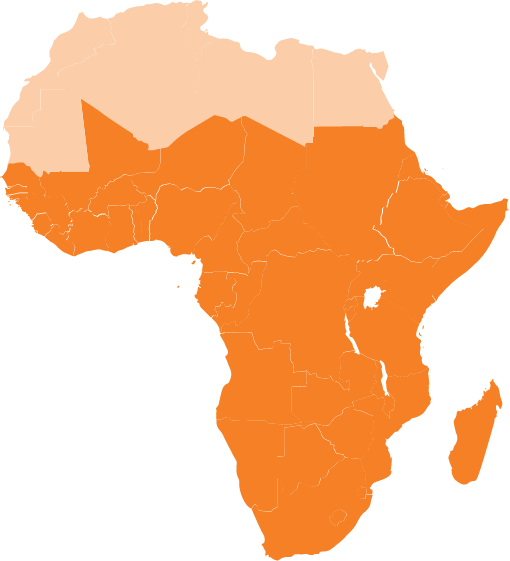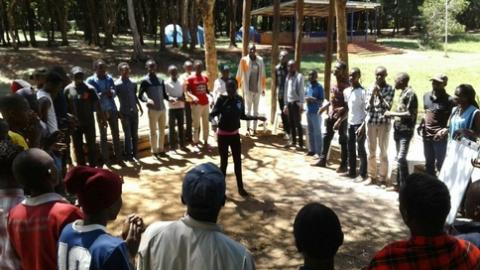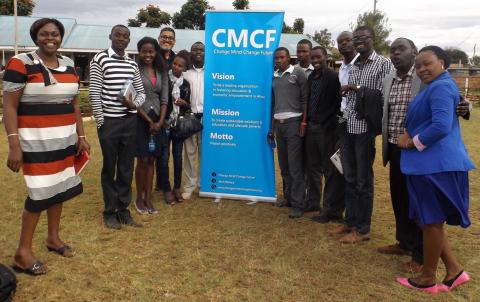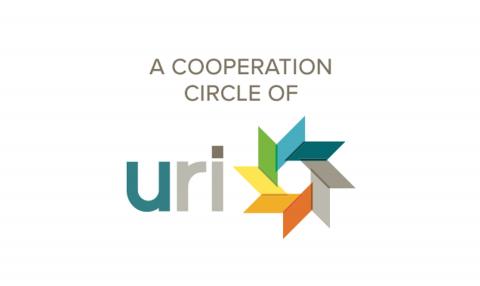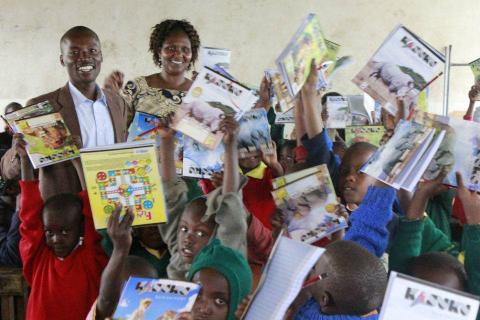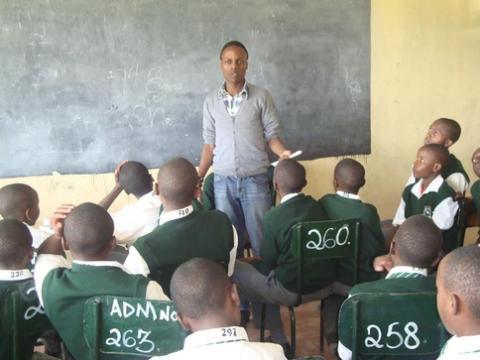Unite And Empower Young Leaders to Build a Community of Youth Leadership in URI in Kenya
The meeting was held in Nairobi from the 29th to the 30th of May at the Desmond Tutu Conference Center. It brought together very instrumental people to the youth movement, who included representatives from The United Nations, Kenyan Government, and URI Global and Regional Staff, as well as different Cooperation Circles. The objective of the first meeting was “Multi-Partner Conversation Towards Increasing Youth Participation in Interfaith Work in Kenya.” This was done through a World Café to ensure that everyone participated in all the questions and shifted from the usual panel structure.
The topics of discussions were as follows:
- Perceptions and Attitudes of Youth Towards Leadership and Development - Facilitated by Matthew Youde, URI Global
- Opportunities for a National Interfaith Youth Movement - Facilitated by Catherine Njuguna, International Youth Committee
- The Place of an Interfaith Cooperation in National Cohesion and Integration - Facilitated Liban Guyo, National Cohesion and Integration Commission
- Criterion for Eligibility for Donor Funding and Support - Facilitated by Jared Ondiek, Akama CEPACET
- Designing Community Initiatives Towards Sustainable Development - Facilitated by Mwaura Kaara and Falu Njie, UNDP.
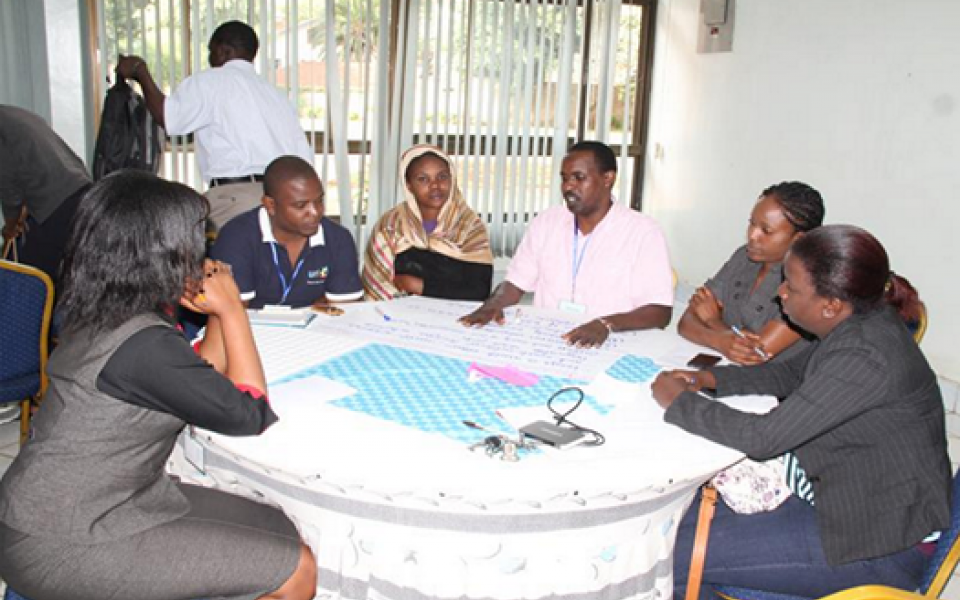
From the discussions it was evident that a lot of opportunities are available for the youth but they have not utilized them for lack of relevant information. The youths have always felt voiceless and inadequate, thus don’t take initiatives. It was also evident that some of the information gotten from some of the religious leaders is misleading and a majority of the ones who fall victim are the youths. The discussion also realized that youth lacked mentors. It was a good platform that saw all the youths identifying at least one opportunity that they best fit in. The facilitators on their presentations were able to bring out the clear picture of the different issues.
This identified the need of youths having an umbrella of interfaith, youth-led organizations where the youth get their own platform and space to have more dialogue on key priority issues such as Insecurity, Corruption, Radicalization, Poverty and Illiteracy in order to eliminate negative prejudice and stereotypes. This points to a momentous need for a multi-partner strategy towards peripheral issues that impact peace and security, a major program among interfaith organizations.
Different Cooperation Circles realized that they had somehow a common mandate, which is creating and enhancing peace in the community. Though differently, all the circles have peace initiatives and outreach programs that educate the community on the importance of peaceful co existence. They learnt how they can work together with other Cooperation Circles in order to really make their individual and collective Cooperation Circle impact evident. Notably, the Cooperation Circles incorporate people from different religious backgrounds and they have been able to cooperate around projects within both formal and informal structures.
Saturday saw the convergence of the Cooperation Circles to put together the deliberations of the previous meeting and come up with a concrete, youth-led interfaith program for the URI Cooperation Circles in Kenya.
Cooperation Circles present included:
- Undugu Family from Kibera, engaging in interfaith dialogues, peacebuilding trainings, and forums in slums, as well as environmental conservation, offering guidance and counseling to local children, and empowering the forgotten boy child.
- TWINKLE Initiative, engaging in mentorship on life skills and gender issues, fighting for children’s and women’s rights, empowering the girl child, and leading peacebuilding initiatives in schools.
- Change Mind Change Future, engaging in mentorship for innovative change, national peace initiatives, women’s empowerment, and environmental conservation.
- Vision Young Mothers from Kibera, engaging in entrepreneurship trainings, young mothers’ and children’s empowerment, peacebuilding in Kibera, and mentorship in schools.
- CEPACET, engaging in mentorship on human rights and social justice, peacebuilding and reconciliation, and grassroots women’s social and economic empowerment.
- Big Brother Society, engaging in career talks and trainings, leadership trainings, women’s empowerment, and peace initiatives.
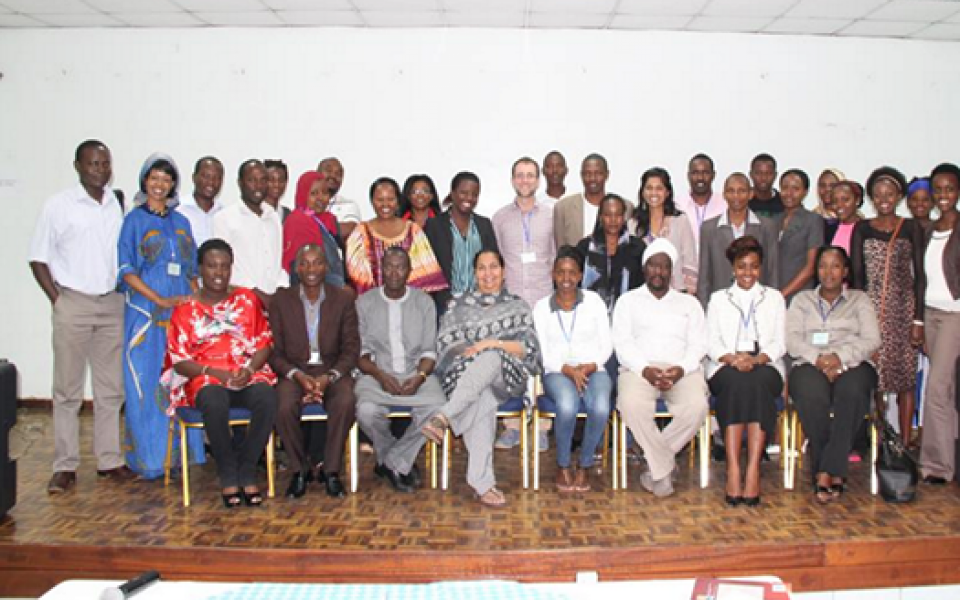
The forum was conducted through the Appreciative Inquiry Method by going through the 4Ds of:
- Discover
- Dream
- Design
- Destiny
People were allowed to air out their views, opinions, expectations, experiences, ideas and anything else they felt was important. This was done to allow the people who had a sense of urgency to speak burning issues. It was also a way of balancing the power different people have in certain spaces, for example based on gender or age.
DISCOVER
The participants were paired into two and had dialogues about experiences and different values of youth and youth leadership. On this stage they also shared about the challenges, power and potential of young people in general. The also shared on what religion, beliefs and traditions say on youth and youth leadership and exactly what community the URI charter points to. Evidently from the dialogues, the youth believe that leadership is for everyone and it’s not reserved for a certain people. Importantly at this stage, the members offered that they felt informed and empowered from the partners’ meeting on Friday. Indeed they were able to identify their potentials and the many opportunities among the present and potential partners.
DREAM
Here the participants had dialogues on the changes young people can bring and values and benefits of a community of young leaders. There was a common dream for hope of a community of young leaders in the near future. Towards this, through a process of consultation, the Cooperation Circles will eventually formulate a prioritized common project or a cohesive action plan.
DESIGN
This was a very crucial stage in the whole process because this is where the structure of the network was formed carrying along past thoughts from previous stages. The participants were engaged on the possibilities of a common project and how it would impact, their individual and or collective efforts, also informing the identity of URI in the region.
DESTINY
This was the final stage of the process where the next steps were discussed. The deliberations included:
- The creation of a common communication platform where different matters pertaining the network would be channeled through.
- There was also an agreement that the participants be meeting once after every two months, but the first follow-up meeting will be held on the 13th July 2015 at 2:00pm to ensure that they don’t lose the momentum.
- Formation of a subgroup and a committee be elected to be in charge of the running of the group’s activities.
- Extra Note: The partners present at Friday’s meeting requested a follow-up meeting in the light of youth participation in active citizenship.
From the participants’ response to a few questions asked regarding the two meetings, it was identified that they enjoyed the model of facilitation and also that the objectives were identified and followed. It was also realized that the participants would like to discuss on the progress of the network and see whether the objectives are being met and also cross cutting challenges on the subsequent meetings among other matters.
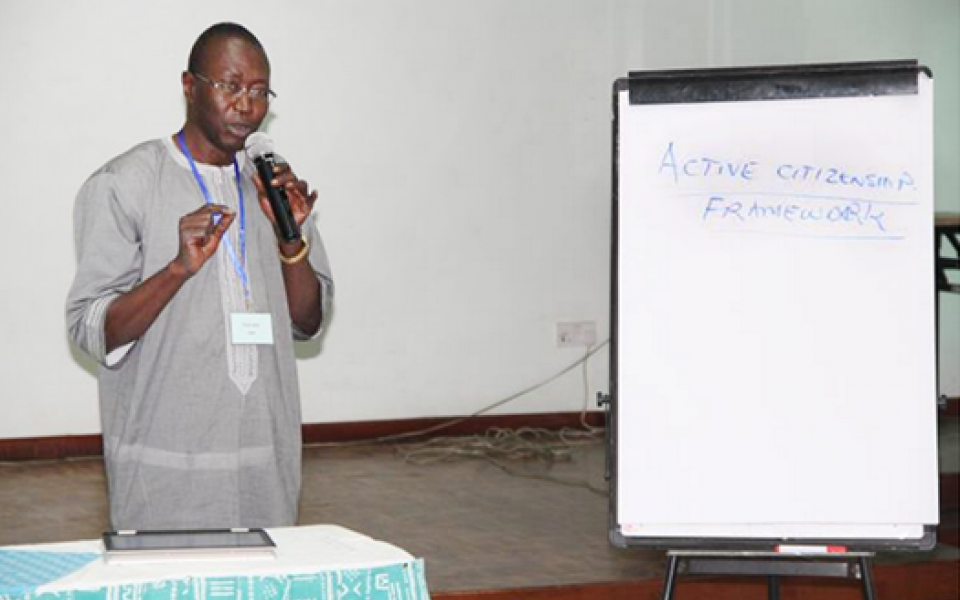
PROCESS OVERSEEN BY:
Mrs. Rattan Channa
Mahamoud Sougueh
Krithika Harish
Matthew Youde
Hannington Wako
Nyambura Mundia
REPORT COMPILED BY:
Rose Nduta
